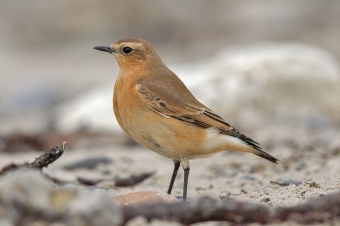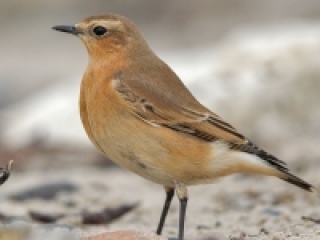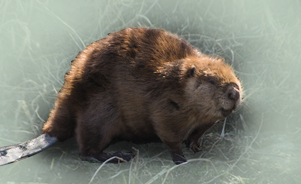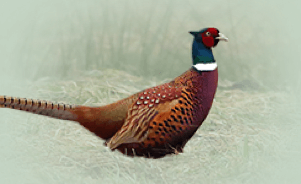Northern wheatear or wheatear Oenanthe oenanthe

Features
The northern wheatear or wheatear is as big as a house sparrow.
| Species | Bird |
| Living space | Meadow, Swamp |
| Size | 14 - 16 cm |
| Weight | 25 g |
Description
The male's ochre throat and chest continuously reach into its white belly. In summer, males have an ash-grey back, nape and head and uniformly black-coloured wings. From the male’s black pointy beak, a black belt is drawn across its eyes, which spreads towards the nape. It also has a white stripe above the eyes. In autumn and winter, the grey colour of the male's upperside is replaced by brown, and the feathers on its wings become light-brown; even the black eye mask is no longer so pronounced. The females have a similar pattern as males in their summer plumage, but their colours are not as pronounced. Their wings are dark-brown, the back, nape and head are brownish-grey and they also have a black mask. The wheatear's relatively long legs are the same colour in both sexes – dark grey. The northern wheatear or wheatear is a migrant which spends the winters in Africa. In spring, the wheatear returns to its nesting areas. In April and May, it stacks grass, moss and hair between stones, within cracks in the rocks or walls, in a rabbit's hut or a similar hiding place, and lays 5 or 6 eggs there. It likes open stony landscapes high above the sea, where there are extensive grasslands, for example pastures and meadows, separated by stone walls, and it often nests in moors and marshes. It feeds on small invertebrates, mainly insects, as well as spiders, snails and earthworms.Northern wheatear or wheatear
on the habitat Temenica
It can be seen from April to October.

Features Temenica (3)
SPECIAL ogr.




